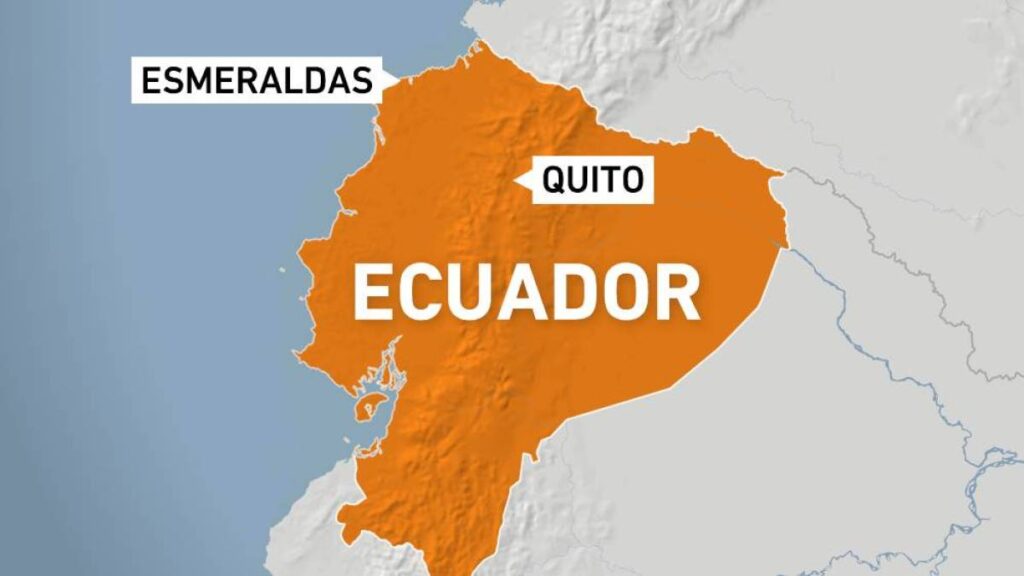DEVELOPING STORYDEVELOPING STORY,
The epicentre of the quake is believed to have been near the Pacific coast of the northwestern city of Esmeraldas.
A magnitude 6.3 earthquake has struck near the coast of Ecuador, according to the European-Mediterranean Seismological Centre (EMSC).
The epicentre of the quake – which took place at about 6:45am local time (11:45 GMT) – was near the Pacific coast of the northwestern city of Esmeraldas, at a depth of 30km (18.6 miles), said the EMSC. Tremors were reported in 10 provinces of the country, even as far as the capital, Quito.
Images shared online show buildings visibly damaged in the earthquake. Damaged structures included 30 homes, a health centre and a military building, the facade of which partially collapsed, according to authorities.
Ecuador’s daily El Comrecio newspaper reported power outages in Esmeraldas. The state energy company Petroecuador said that it had paused operations at the Esmeraldas refinery and SOTE pipeline as a precautionary measure following the earthquake.
President Daniel Noboa said in a social media post that the government is working to set up shelters and offer humanitarian assistance to residents, promising to help with “everything our people need”.
“The government is with you,” he said.
One person suffered head wounds from the tremor, said the country’s emergency service.
“It was very strong,” ex-presidential candidate Yaku Perez told the AFP news agency from the scene. “It felt like an eternity, but I guess it was less than a minute.”
Imágenes muestran varios daños sufridos por algunas edificaciones en #Esmeraldas – #Ecuador . Esto luego de un sismo de 6.0 #temblor pic.twitter.com/nrQwEc0Mts
— Ecuador Comunicación 🛜 Siempre Más Noticias (@ecuadorprensaec) April 25, 2025
Past earthquakes
Ecuador has a long and painful history of seismic disasters.
In 2013, a quake that rattled northern Peru and southern Ecuador left at least 14 people dead and destroyed homes, schools and health clinics.
Three years later, in 2016, a devastating magnitude 7.8 earthquake – Ecuador’s strongest since 1979 – killed at least 77 people and injured more than 500 others.
The country lies along the Pacific’s “Ring of Fire”, a volatile zone of seismic and volcanic activity encircling the ocean.
Ecuador straddles the boundary where the Nazca and South American tectonic plates meet – two massive sections of the Earth’s crust that grind against each other, moving at an average rate of about 65 millimetres (2.5 inches) per year.
Ecuadoran authorities said there was no tsunami risk from the latest quake.
Read the full article here

